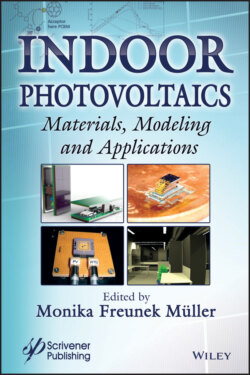Читать книгу Indoor Photovoltaics - Группа авторов - Страница 38
3.3 State of IPV Design, Issues, Approaches
ОглавлениеAs the irradiance level in indoor surroundings generally is very low, the ratio of active conversion to loss area is very small. Thus, efficiency losses need to be avoided where possible. Therefore, a good indoor design avoids shading caused by module integration, ensures good electric contacts, and aims to avoid recombination losses at surfaces, including edges.
Another issue is a reliable characterization of the device. As standards and equipment are missing, reproducibility and comparability pose a challenge both to designers and customers. This is enforced by the fact that today’s most common light sources vary in their spectral distribution and that the available measurement instruments vary in their response to these light sources, too. Furthermore, photometric measurement devices optimized to measure human visibility exclude spectral radiation that is usable for IPV devices. These issues and approaches to solutions are outlined and discussed in Chapters 4 and 5. Müller (Freunek) demonstrated the use of a radiometric reference cell and pyranometers for indoor applications [12, 14]. Today, Enlitech offers an indoor solar cell light simulator, which is capable of measuring both photometric illuminance and radiometric irradiance for low irradiance levels and narrow-band light sources such as LED [28].
Contrary to outdoor applications, where the geographic location and the azimuth might be sufficient for the first stage of planning, in IPV spectra, intensity and contribution of direct irradiance vary from application to application. As these measurements can become too elaborate for the first stage of product development, simulations can be alternatively used. Different research groups have evaluated this for indoor conditions [13, 14, 29, 30]. Chapter 4 introduces the simulation of indoor irradiance conditions.
